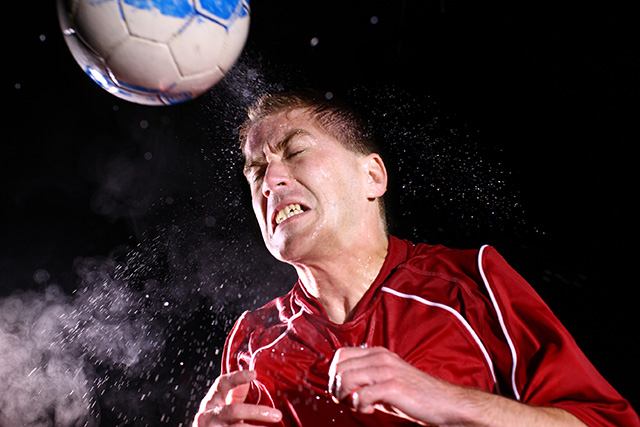Soccer players who score using their head are more likely to suffer from cognitive impairments


If you know anyone who plays soccer, tell them to stop using their heads to score a goal or intercept the ball. An American study warns that the impressive-looking practice of “ball heading” makes it more likely for soccer players to suffer cognitive problems, a Science Daily article states.
Researchers from the Albert Einstein College of Medicine (Einstein) have found that deliberately using your head for soccer tricks is much worse than unintentionally getting hit on the skull during collisions.
Study leader Dr. Michael Lipton is a professor at Einstein and the medical director of MRI Services at the university’s Montefiore Medical Center. He and his team published their findings in the science journal Frontiers in Neurology.
Dr. Lipton says most experts believe unintentional head impacts are responsible for most cases of diagnosed concussions in soccer. The bulk of prevention efforts are directed towards reducing those collisions. However, soccer ball heading is not harmless to the player who practices it. An earlier study by Lipton’s team showed that frequent heading causes more concussion symptoms than previously realized. Their newest research indicates that the practice can also affect brain function for at least a short amount of time. (Related: Hardcore headbanging puts concert-goers at danger of possibly fatal cranial injuries.)
Bouncing soccer balls off your head can impair brain function
Other research efforts have already established a link between ball heading and short-term cognitive issues. The Einstein study, however, is the first to compare its cognitive effects to those experienced during collisions and other accidental head impacts.
100% organic essential oil sets now available for your home and personal care, including Rosemary, Oregano, Eucalyptus, Tea Tree, Clary Sage and more, all 100% organic and laboratory tested for safety. A multitude of uses, from stress reduction to topical first aid. See the complete listing here, and help support this news site.
The study drew from a pool of 308 amateur soccer players in New York City. All of them were male and ranged in age from 18 to 55. Participants provided details on their soccer activity during the last two weeks, such as heading and unintentional head impacts. Furthermore, the players answered neuropsychological tests that measured their attention spans, psychomotor speed, verbal learning, verbal memory, and working memory.
The results of the survey showed that the participants headed balls 45 times on average during the two-week time-span. About one-third of the players got hit in the head by accident at least once during that same period. Participants who performed the most headings also got the worst scores in the tasks that covered attention and psychomotor speed. These tests are involved with areas that can be affected by brain injury. There was also a minor link between a player’s number of headings and his performance on the task that measured working memory. However, the correlation was barely significant.
Protect your brain by avoiding soccer ball heading
The Einstein research team reported that accidental head impacts did not appear to affect cognitive performance in any way. Furthermore, the changes in brain function caused by frequent heading did not seem to cause serious debilitation.
Still, Dr. Lipton advises caution. According to him, even the smallest decrease in neuropsychological function could alter the tiny but vital structures that make up the brain. These changes would result in persistent or even permanent impairment.
Further research along this line would need to involve a larger number of soccer players and cover a longer period of time. For now, prevention is the best cure.
“Heading is a potential cause of brain injury, and since it’s under control of the player, its consequences can be prevented,” he says to all the avid soccer players out there.
You can find out more about the ways your brain functions – and how you can protect it from ball headings and other risks – at Brain.
Sources include:
ScienceDaily
FrontiersIn.org







